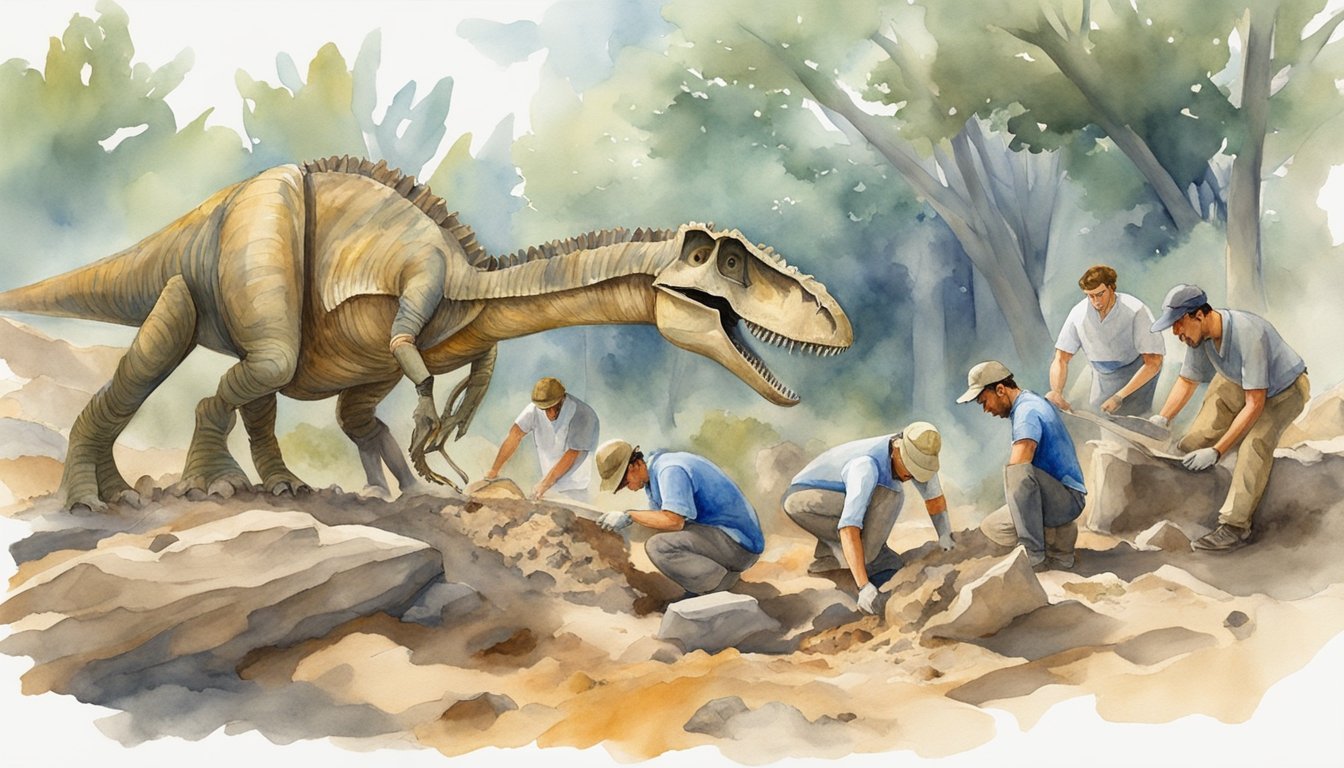Discovery and Significance
The year 2022 marked a significant leap in paleontology with the identification of several new dinosaur species. These discoveries enhanced our understanding of the species that once roamed the Earth, particularly during the Cretaceous period.
Identification of the New Species
One notable discovery is an abelisaurid named Guemesia ochoai, a small yet distinctive theropod dinosaur uncovered in Argentina. Meanwhile, another addition to the list of 2022 dinosaur discoveries is Jakapil kaniukara, a small, armored dinosaur, elucidating the diversity of Cretaceous fauna. Paleontologists continue to decrypt more fossils, expanding our comprehension of the Jurassic and Cretaceous ecosystems.
Meraxes Gigas: A Colossal Find
In northern Patagonia, Argentina, the discovery of Meraxes gigas stands out as a monumental find. Named after a dragon in fantasy novels, Meraxes gigas was a member of the carcharodontosauridae family, known for its large size and carnivorous nature. This particular dinosaur showcased the trait of disproportionately short arms, akin to those of Tyrannosaurus rex, revealing more about the evolutionary biology of these colossal creatures. The revelations brought by these Cretaceous period fossils from the Southern Hemisphere are critical to the understanding of species differentiation following the split of the ancient supercontinent Gondwana.
Anatomy and Paleoecology

The year 2022 was a landmark for paleontology with several new dinosaur species discoveries shedding light on the diversity and complexity of prehistoric life. The anatomy and paleoecology of these dinosaurs reveal remarkable adaptations that allowed them to thrive in the ecosystems of their time.
Adaptations and Hunting Techniques
The newly discovered carnivorous dinosaur species, such as the Meraxes gigas, displayed physical adaptations that underscore their role as formidable predators of the Late Cretaceous. Their notable features include large skulls and tiny, functionally reduced forelimbs. Despite the reduced size of their arms, these dinosaurs were likely efficient hunters, possibly relying on their powerful jaws as primary hunting tools. This adaptation mirrors the hunting techniques seen in the famous Tyrannosaurus rex.
Comparative Analysis With Other Dinosaurs
When compared to their contemporaries, the differences in anatomy among carnivorous dinosaurs become stark. While T. rex is well known for its robust form and minuscule arms, it is now understood that these traits were not unique within theropods.
Paleontologists, including Juan Canale, have identified the new species with similarly short arms, which emphasizes that what was once thought to be an oddity might have been more common. It is a contrast to the long-necked sauropod dinosaurs, which boasted lengthy forelimbs to reach high vegetation. This diversity in anatomy illustrates the varied evolutionary paths taken by different dinosaur groups as they adapted to their specific roles within the ecosystem—predators like theropods adapted for hunting, while herbivores like sauropods and armored dinosaurs evolved to optimize feeding strategies and defense mechanisms.
The environment of the Upper Cretaceous supported a rich and varied ecosystem, where herbivorous dinosaurs such as the stegosaurus and ankylosaurus coexisted with towering carnivores. The discovery of these new species allows for a richer understanding of the paleoecology of the era, uncovering how these ancient creatures interacted within their habitats. Fossil evidence suggests that these prehistoric creatures adapted to diverse climates and food sources, shaping their ecosystems in complex ways. Modern studies on animal behavior and ecological balance, including cassowary conservation efforts, provide insight into how species interactions influenced survival and evolution. By comparing ancient and present-day ecosystems, scientists can better understand the long-term impacts of environmental changes on biodiversity.

